GrabCAD

Heinkel He 162 Salamander
by GrabCAD
Last crawled date: 1 year, 8 months ago
The Heinkel He 162 Volksjäger (German, "People's Fighter") was a German single-engine, jet-powered fighter aircraft fielded by the Luftwaffe in World War II. Developed under the Emergency Fighter Program, it was designed and built quickly and made primarily of wood as metals were in very short supply and prioritised for other aircraft. Volksjäger was the Reich Air Ministry's official name for the government design program competition won by the He 162 design. Other names given to the plane include Salamander, which was the codename of its wing-construction program, and Spatz ("Sparrow"), which was the name given to the plane by the Heinkel aviation firm
The aircraft was notable for its small size; although almost the same length as a Bf 109, its wing was much shorter at 7.2 metres (24 ft) vs. 9.9 metres (32 ft) for the 109. Most distinctive was its top-mounted engine, which combined with the aircraft's ground-hugging landing gear allowed the engine to be easily accessed for maintenance. This made bailing out of the aircraft without hitting the engine difficult, and the 162 is thus also notable as the first single-engine aircraft to mount an ejection seat in an operational setting. The small size left little room for fuel, which combined with the inefficient engine resulted in very low endurance on the order of 20 minutes, and it only had room to mount two autocannons, making it quite underarmed for the era.
A series of fatal accidents during testing required a series of refinements that delayed the program, but it eventually emerged in January 1945 as an excellent light fighter. Although production lines were set up and deliveries began, the state of Germany by that time made the effort pointless. Of just less than 1,000 examples on the assembly lines, only about 120 were delivered to the airfields, and most of those never flew, lacking parts, fuel and pilots. Small numbers were used in development squadrons and these ultimately saw combat in a few cases in April 1945, but the plane proved more dangerous to its own pilots as its tiny fuel load led to a number of planes crashing off field, along with additional cases of structural failure.
Production was still ongoing when the war ended, and a number of examples were captured by the Allied forces along with ample supplies of parts from the production lines. Eric Brown flew one just after the war and considered it a first-rate aircraft with few vices. A number remain in museum collections around the world
The aircraft was notable for its small size; although almost the same length as a Bf 109, its wing was much shorter at 7.2 metres (24 ft) vs. 9.9 metres (32 ft) for the 109. Most distinctive was its top-mounted engine, which combined with the aircraft's ground-hugging landing gear allowed the engine to be easily accessed for maintenance. This made bailing out of the aircraft without hitting the engine difficult, and the 162 is thus also notable as the first single-engine aircraft to mount an ejection seat in an operational setting. The small size left little room for fuel, which combined with the inefficient engine resulted in very low endurance on the order of 20 minutes, and it only had room to mount two autocannons, making it quite underarmed for the era.
A series of fatal accidents during testing required a series of refinements that delayed the program, but it eventually emerged in January 1945 as an excellent light fighter. Although production lines were set up and deliveries began, the state of Germany by that time made the effort pointless. Of just less than 1,000 examples on the assembly lines, only about 120 were delivered to the airfields, and most of those never flew, lacking parts, fuel and pilots. Small numbers were used in development squadrons and these ultimately saw combat in a few cases in April 1945, but the plane proved more dangerous to its own pilots as its tiny fuel load led to a number of planes crashing off field, along with additional cases of structural failure.
Production was still ongoing when the war ended, and a number of examples were captured by the Allied forces along with ample supplies of parts from the production lines. Eric Brown flew one just after the war and considered it a first-rate aircraft with few vices. A number remain in museum collections around the world
Similar models
3dwarehouse
free

Heinkel He 162 Volksjäger (low poly)
...#germany #test #luftwaffe #ww2 #fighter #airplane #aircraft #interceptor #volksjager #volksjäger #heinkel #he162 #162 #volksjager
3dwarehouse
free
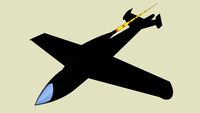
He 162 Volksjager Salamander
...ager salamander
3dwarehouse
second world war german jet, fighter aircraft. #aircraft #he_162 #jet #plane #salamander #volksjager
cg_trader
$30

Heinkel He 162 A10
...n luftwaffe heinkel germany salamander military aircraft fighter jet airplane cockpit fighter jet jet fighter jet plane ww2 plane
cg_trader
$50

Heinkel He 162 A2 Salamander
...n luftwaffe heinkel germany salamander military aircraft fighter jet airplane cockpit fighter jet jet fighter jet plane ww2 plane
cg_trader
$30

Heinkel He 162 D
...n luftwaffe heinkel germany salamander military aircraft fighter jet airplane cockpit fighter jet jet fighter jet plane ww2 plane
cg_trader
$30

Heinkel He 162 C
...n luftwaffe heinkel germany salamander military aircraft fighter jet airplane cockpit fighter jet jet fighter jet plane ww2 plane
3dwarehouse
free

Heinkel HE 162
...vaterland sterben. aber das flugzeug rockt... #162 #flugzeug #he #heinkel #krieg #plane #salamander #spatz #volksjäger #world_war
grabcad
free

Heinkel He 162 Volksjäger
...heinkel he 162 volksjäger
grabcad
another old file.
cg_trader
$49

Heinkel He 162 Volksjaeger V01 3D model
...e162 fighter german wwii airplane military aircraft jet volksjaeger spatz salamander luftwaffe nazi .stl stl 3d printer metaverse
3dwarehouse
free

avion de chasse (prototype) Heinkel HE-162 Salamander
...on de chasse (prototype) heinkel he-162 salamander
3dwarehouse
avion de chasse (prototype) heinkel he-162 salamander (allemagne)
Heinkel
turbosquid
$50

Heinkel He-115
... available on turbo squid, the world's leading provider of digital 3d models for visualization, films, television, and games.
turbosquid
$29

Heinkel He 111 J
...einkel he 111 j for download as 3ds, obj, fbx, blend, and dae on turbosquid: 3d models for games, architecture, videos. (1202891)
turbosquid
$29
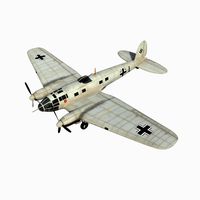
Heinkel He 111 L
...einkel he 111 l for download as 3ds, obj, fbx, blend, and dae on turbosquid: 3d models for games, architecture, videos. (1253166)
turbosquid
$6
![GERMAN-HEINKEL-HELMET_[WW]](/t/13472169.jpg)
GERMAN-HEINKEL-HELMET_[WW]
...inkel-helmet_[ww] for download as 3ds, obj, fbx, dae, and stl on turbosquid: 3d models for games, architecture, videos. (1463686)
turbosquid
$29

Heinkel HE 111 H Aircraft
...l heinkel he 111 h aircraft for download as obj, c4d, and fbx on turbosquid: 3d models for games, architecture, videos. (1494825)
turbosquid
$29

Heinkel He 111 VG+ES
...el he 111 vg+es for download as 3ds, obj, fbx, blend, and dae on turbosquid: 3d models for games, architecture, videos. (1202882)
turbosquid
$29

Heinkel He 111 S7+HA
...el he 111 s7+ha for download as 3ds, obj, fbx, blend, and dae on turbosquid: 3d models for games, architecture, videos. (1202515)
turbosquid
$29

Heinkel He 111 5J-GH
...el he 111 5j-gh for download as 3ds, obj, fbx, blend, and dae on turbosquid: 3d models for games, architecture, videos. (1204793)
turbosquid
$20

Heinkel HE 111 Z (Zwilling)
... available on turbo squid, the world's leading provider of digital 3d models for visualization, films, television, and games.
3d_export
$60

heinkel he-51
... covering. it was powered by a glycol-cooled engine, with an armament of two 7,92 mm (.323 in) machine mounted above the engine.
Salamander
3d_export
$30

fire salamander
...fire salamander
3dexport
fire salamander
turbosquid
$20

Salamander
...odel salamander for download as 3ds, fbx, blend, dae, and stl on turbosquid: 3d models for games, architecture, videos. (1316805)
3ddd
$1
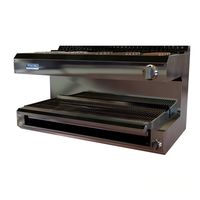
Гриль Salamander V36SMW2
...гриль salamander v36smw2
3ddd
гриль
проф. гриль salamander v36smw2
3ddd
$1
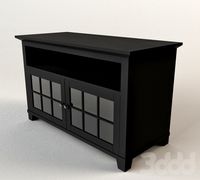
Salamander SDAV1 5031 Matte Black
...alamander , тумба
salamander sdav1 5031 matte black
габариты (шхвхг) 1270 x 787 x 571 мм
humster3d
$40
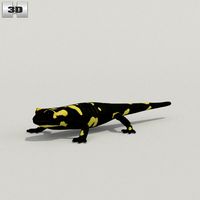
3D model of Spotted Salamander
... detailed 3d model of spotted salamander in various file formats. all our 3d models were created maximally close to the original.
turbosquid
$46
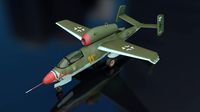
HE 162 A2 Salamander Aircraft
... 162 a2 salamander aircraft for download as obj, c4d, and fbx on turbosquid: 3d models for games, architecture, videos. (1494819)
3ddd
$1

саламандра
...саламандра 3ddd саламандра , ящерица salamander ...
3d_export
$11
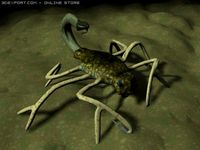
Scorpimandra 3D Model
...scorpimandra 3d model 3dexport scorpion salamander scorpimandra 3d model hokum 14400...
3d_sky
$8

salamander
...salamander
3dsky
lizard
salamander
sketchfab
$10

Salamander
...salamander
sketchfab
salamander - buy royalty free 3d model by mihail burmistrov (@mishkin79) [5f1edd9]
162
design_connected
$20

Delta 162
...delta 162
designconnected
zanotta delta 162 computer generated 3d model. designed by progetti, emaf.
turbosquid
$10

Table 162
...ree 3d model table 162 for download as max, max, fbx, and obj on turbosquid: 3d models for games, architecture, videos. (1649032)
turbosquid
$9

Office 162
... available on turbo squid, the world's leading provider of digital 3d models for visualization, films, television, and games.
turbosquid
$9

Chair 162
...d model chair 162 for download as max, max, 3ds, fbx, and obj on turbosquid: 3d models for games, architecture, videos. (1628842)
design_connected
$16
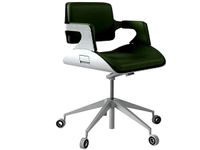
Silver 162S, 262S
...ilver 162s, 262s
designconnected
interstuhl büromöbel silver 162s, 262s computer generated 3d model. designed by teherani, hadi.
turbosquid
$7

Rug Set 162
...y free 3d model rug set 162 for download as max, obj, and fbx on turbosquid: 3d models for games, architecture, videos. (1440315)
turbosquid
$2

Decorative panel 162
... model decorative panel 162 for download as max, obj, and fbx on turbosquid: 3d models for games, architecture, videos. (1375598)
turbosquid
$12

Lamp 162 3in1
...del lamp 162 3in1 for download as max, max, 3ds, fbx, and obj on turbosquid: 3d models for games, architecture, videos. (1648830)
3ddd
$1

Rugs by ZHALEH (162 textures)
...rugs by zhaleh (162 textures)
3ddd
ковер
сборник ковров от zhaleh.
в архиве max 2011, fbx и 162 текстуры ковров.
turbosquid
$39

Interstuhl 162S Swivel Chair
... available on turbo squid, the world's leading provider of digital 3d models for visualization, films, television, and games.
